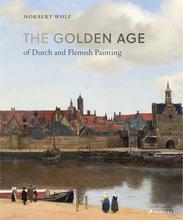More about Portrait of a Couple, Probably Isaac Abrahamsz Massa and Beatrix van der Laen
- All
- Info
- Shop

Contributor
In the era of Instagram, Twitter, and Facebook, Frans Hals' Wedding Portrait of Isaac Massa and Beatrix van der Laen fits right in, showing a smiling couple relaxing in an Italian-style "pleasure garden."
Social media has become a dominant channel for couples to display happiness and contentment as the ultimate status symbol. These smiles are often an obligatory sign of a functional partnership. An alternate title calls this pair the Happy Couple, the type who would've invited strangers to their wedding, donated the extra food, and, if they were alive today, wrapped up the night with "You're the First, the Last, My Everything" by Barry White. Wedding portraits of Hals' time and place were typically dour and grim, indicating the seriousness of the marital obligation, not to mention the commonness of plagues, bowel ailments, and other rampant illnesses. Although it is an earlier work, the dissociated vibe of the gaunt, "X-Files"-esque characters in Jan van Eyck's Arnolfini Portrait would have been much more normal for Hals' time and place.
When a painting's owner gives a title that includes the word "probably," as the Rijksmuseum does for this one, you know there's a fun debate going on. Until 1851, it seems, there was no documentation as to who the people in the painting are, or if there was, it was eaten by Dutch hogs, or someone used it to start a fire in a cold Dutch winter. In 1851, like a true carnival barker, an opportunistic art dealer claimed that the man and woman were Hals himself and the painter's second wife, Lysbeth Reyniersdr, and somebody was impressed enough with that story to buy the painting. Fifty-nine years later, a scholar debunked that it was a selfie, and eventually the new hypothesis emerged: the painting "probably" shows the diplomat Isaac Massa and Beatrix van der Laen. It's a good story; Massa was a very close friend of Hals and his children, and would appear in at least three other paintings. It's at least a better story than "We really have no idea," and the world of art criticism is like the telephone game: speculations turn into rumors, which sometimes, somehow become the absolute truth.
With our lack of evidence, we become intuitive seers or fortune tellers, and I mean that in the best way possible: we read the painting as the ancients would read tea leaves or the patterns of birds in the sky. We become mystics, poets and esoterics, interpreting the features of the painting symbolically: the thistle in the foreground, the critics say, represents the punishment of Adam and Chava (Latinized as "Eve"), when the Divine Being evicted them from Eden, the vine wrapped around the tree mirrors the way this woman wraps herself around the man. The Roman temple in the background represents the astrological Roman faith, and the deity of marriage, Juno, who was mother to Mars.
Sources
- Bikker, Jonathan. Dutch Paintings of the Seventeenth Century in the Rijksmuseum Amsterdam, Volume 1, Issue 2. Amsterdam: Rijksmuseum, 2007.
- Frans Hals: Exhibition on the Occasion of the Centenary of the Municipal Museum at Haarlem, 1862-1962. Haarlem: Frans Hals Museum, 1962.
- Kahr, Madlyn Millner. Dutch Painting In The Seventeenth Century. London: Routledge, 2018.
- Massa, Isaac. A Short History of the Beginnings and Origins of These Present Wars in Moscow: Under the Reign of Various Sovereigns Down to the Year 1610. Toronto: University of Toronto Press, 1982.
- Smith, David R. "Courtesy and its discontents: Frans Hals's Portrait of Isaac Massa and Beatrix van der Laen." Oud Holland – Journal for Art of the Low Countries 100, no. 1 (Jan 1986): 2–34.
- Valentiner, Wilhelm Reinhold. Frans Hals paintings in America. New York: F. F. Sherman, 1936.
- Westermann, Mariët. The Art of the Dutch Republic, 1585-1718. London: Laurence King, 1996.
Featured Content
Here is what Wikipedia says about Marriage Portrait of Isaac Massa and Beatrix van der Laen
Marriage Portrait of Isaac Massa and Beatrix van der Laen is a painting by the Dutch Golden Age painter Frans Hals, painted c. 1622 and now in the Rijksmuseum, Amsterdam. The couple has been identified as Isaac Massa and his bride Beatrix van der Laen.
Check out the full Wikipedia article about Marriage Portrait of Isaac Massa and Beatrix van der Laen














